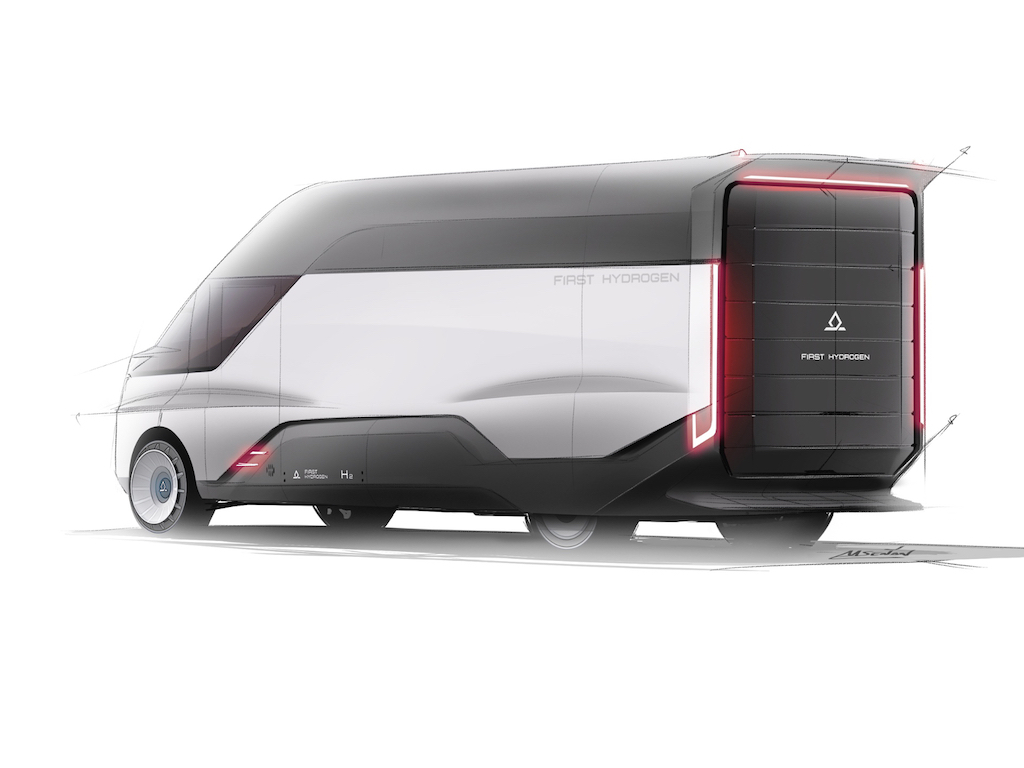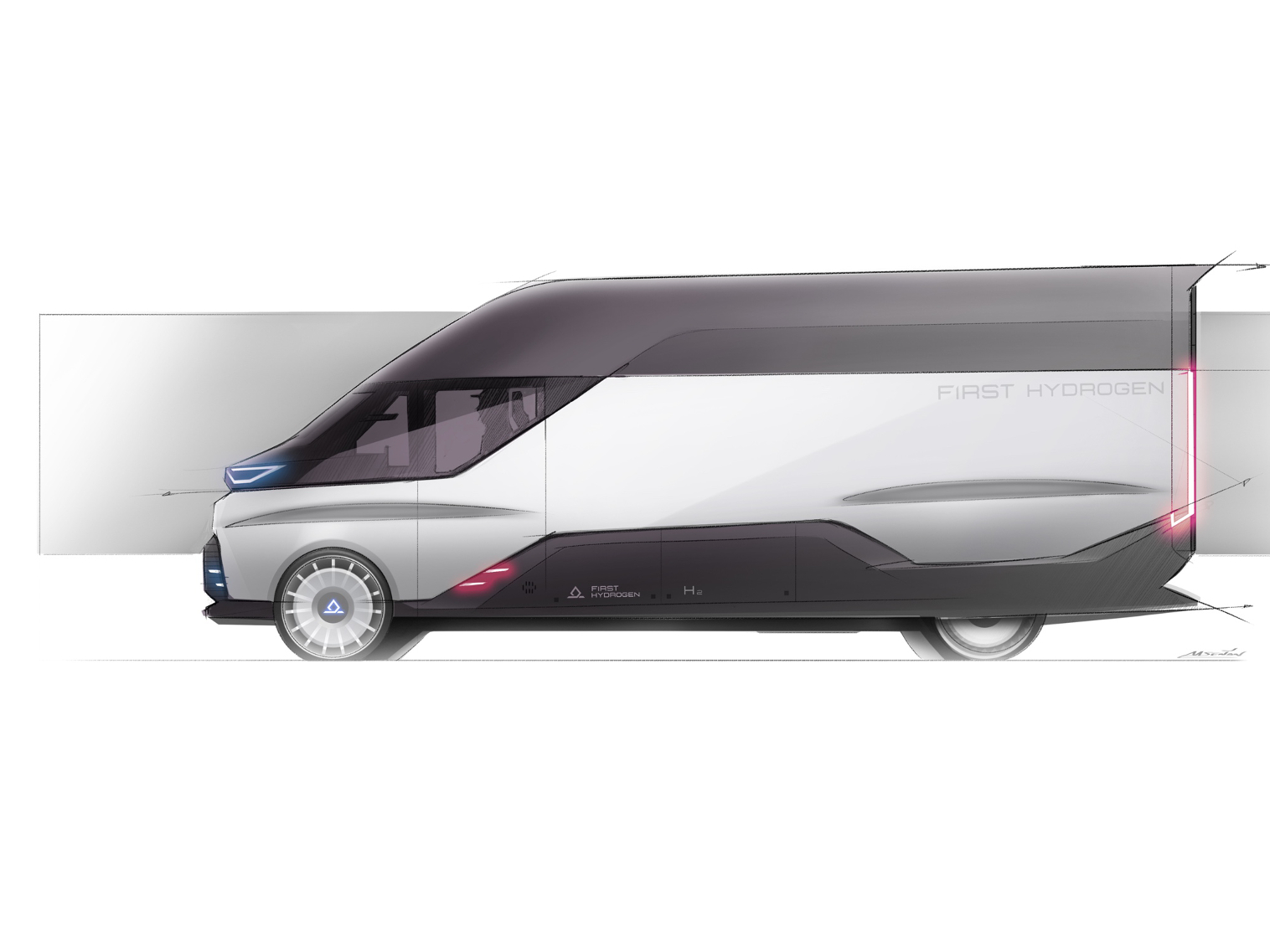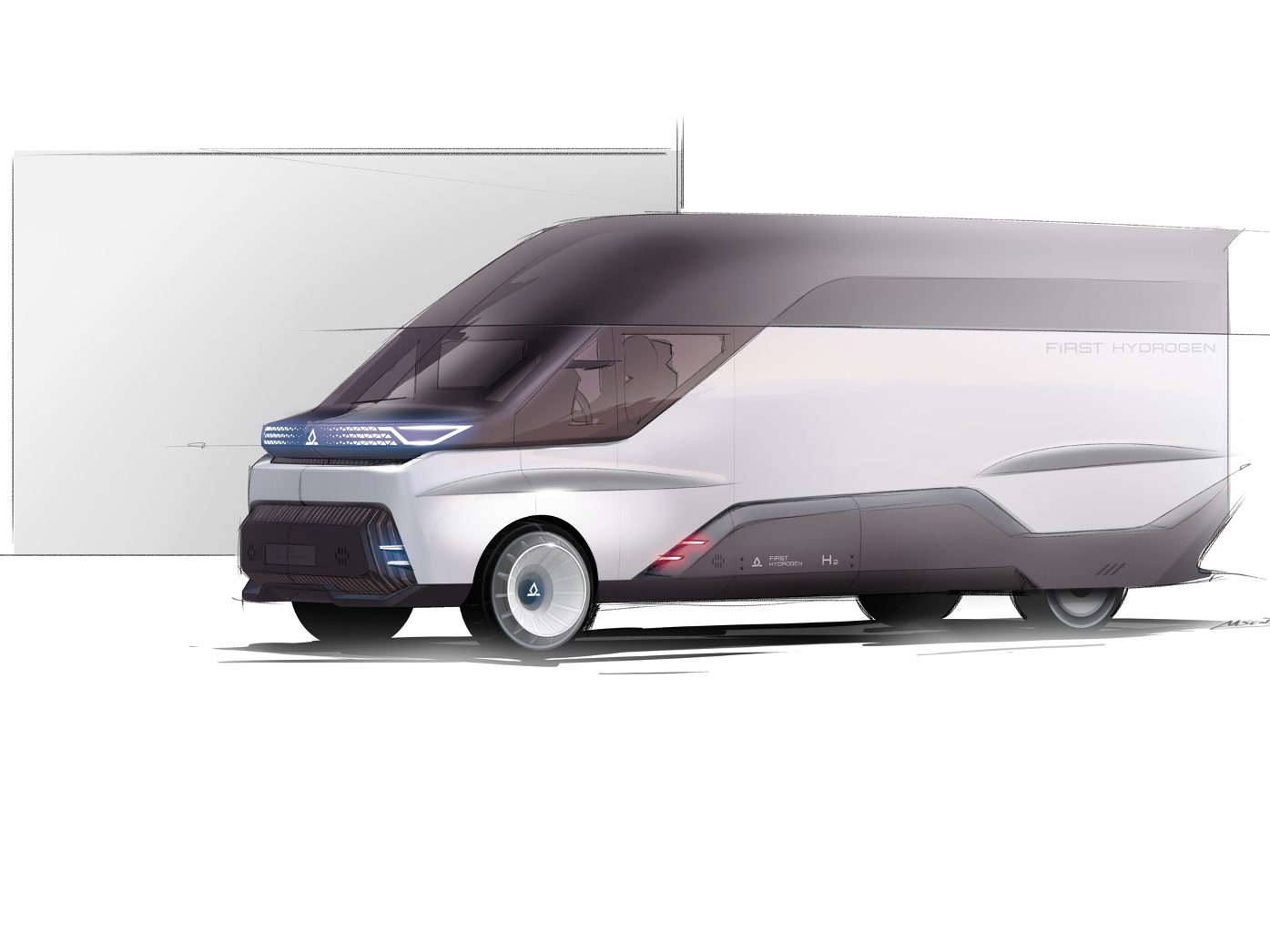First Hydrogen has revealed new sketch images for its Generation II concept vehicle, which it says will be available with either fuel cell electric or battery electric drivetrains.
Revealed as the Vancouver- and London-based zero-emission vehicles developer readies for trials of its Generation I fuel cell electric vehicles (FCEV), the latest images show the vehicle’s overall form in greater detail and indicate some of the van’s technical assets.
Developed in collaboration with global mobility engineering firm EDAG Group, Generation II will adopt a bolder approach to design. The new illustrations display an aerodynamic fuselage and show dynamic fenders and a large front grille, which includes the First Hydrogen branding.
Steve Gill, CEO of Automotive for First Hydrogen, said: “We are delighted to present a first look at the new concept vehicle and are proud of its clean, functional, and modern design. The aerodynamic design and overall proportions have been shaped to consider operations on highways and in urban environments. We have taken a particular focus on the lighting the lighting, ensuring high visibility for drivers and other road users – this is especially important for use by delivery, utilities, and roadside assistance companies – but also make the vehicles instantly recognisable as First Hydrogen.”
Bernat Costa, design director at EDAG Spain, commented: “We have taken great care to reflect the modern and clean energy values First Hydrogen represents in the vehicle design. The pure and minimalist design meets functional needs and accommodates the technical requirements of hydrogen propulsion. We have also created a design suited to modular builds, providing operational flexibility through a range of sizes and potential bespoke elements.”
Fleet trials for the Generation I vehicles will start shortly with members of the UK Aggregated Hydrogen Freight Consortium (AHFC). Vehicle operators, which cover a variety of sectors, will use First Hydrogen’s demonstrator vehicles alongside their existing fleets to evaluate the benefits of different vehicle technologies. The data and feedback will influence the design and engineering of the company’s future vehicles to ensure designs meet customer needs.




